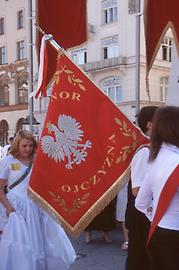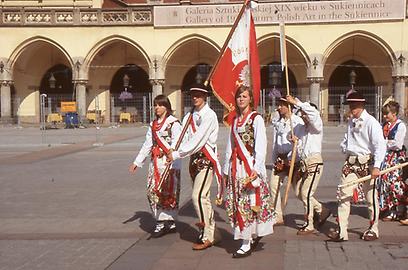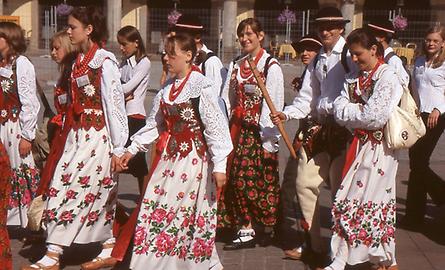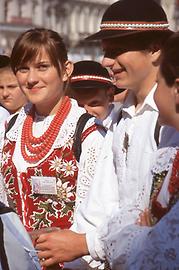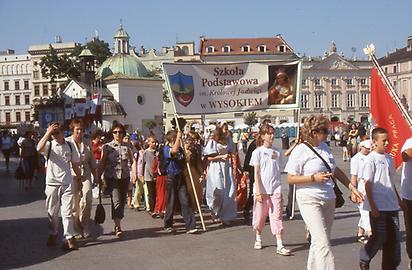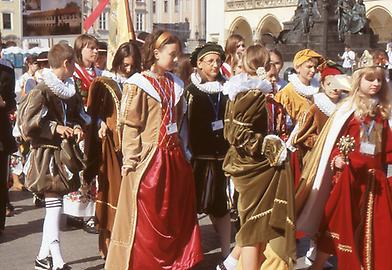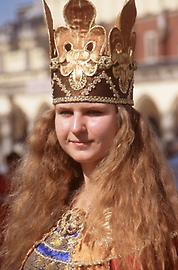The Corpus Christi Procession in Krakau (Kraków) - The most colourful religious festival in Poland#
ByAll photos were taken June 7, 2007 in Krakau, Poland, and are part of the author's archive "Pictureflood Jontes".
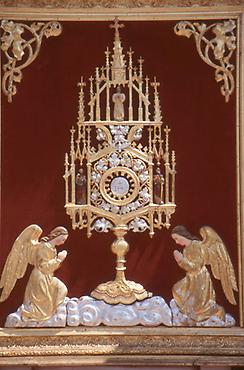
Krakau krakau,polen , the city with the old king's residence is one of the most beautiful cities fo Europe. Officially it turned into a city in 1257 by the " Magdeburger Stadtrecht". It developed into a center for trade and culture already in medieval times. Krakow was capital of the kingdom of Poland till 1596 and is the city with the second oldest university (after Prague and before Vienna) north of the alps.
The largest winged altar of the Gothic created by the Nuremberg sculptor Veit Stoss is located in the Marienkirche. The Wawel royal palace dominated by its cathedral of Middle Ages, Renaissance and Baroque stands high above the town. During the German occupation which started in 1938 and turned Poland to a "Generalgouvernement", the palace was the residence of one of the most terrifying figures of this time, the Governor General Hans Frank.
After Poland had been freed from communist regime and all crimes committed had been made evident, Krakow returned to its old traditions. Polish piety and strength were always present and helped in the liberation process. One hardly find a town in the West, where holy Masses are celebrated every day from early morning until late at night, where churches can hardly hold the crowds of people or where wild punks on their knees are praying fervently in churches.
This is Krakow. The largest, most magnificent and most colourful festivals in the liturgical year is the feast of Corpus Christi with its huge procession down the hill, leading from the Wawel through the city to the square in front of Mary’s Church.
Corpus Christi is the Solemnity of the Most Holy Body and Blood of Christ, in which according to the Catholic understanding the physical presence of Christi is celebrated in the sacrament of the Eucharist. The name derives from the Middle High German vrône lîcham „body of Christ“. The Latin term Corpus Christi expresses the same. In Polish language it is Boze Cialo. The festival takes place sixty days after Easter. Simultaneously, it is the Thursday after Trinity Sunday. It is a public holiday in Austria and Poland. The Corpus Christi procession is an event that offers the highest ecclesiastical deployment of splendour. People have the opportunity to present themselves. It has elements of a penitential procession. In Austria, small birch trunks are placed along the rows of houses, thus bringing nature into the city. The procession stops at four stations, where altars are set up outdoors, Gospel pages are read, intercessory prayers are spoken and God’s blessing is invoked. The procession is a theophoric, meaning, that Christ is bodily carried in the converted host. Under a fabric canopy, called „sky“, the priest carries the monstrance with the body of Lord.
The festival derives from a vision of the sacred Juliana of Liege in which Lord appeared to her in 1209 and told her a sun miracle. When in 1215 the transubstantiation from the body of the Lord in transformation was raised as dogma, this was another impetus for the establishment of the feast which was declared as compulsory by the universal church in 1264. The first Corpus Christi procession took place in Liege in 1264. In Krakow, the first procession took place in 1320.
The procession in Krakow begins with a Mass, which is celebrated by the Cardinal of Krakow outdoors in front of the Wawel. Already prior to the Mass, crowds of people appear and line up in an exactly defined sequence.
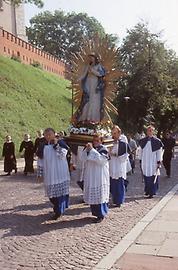

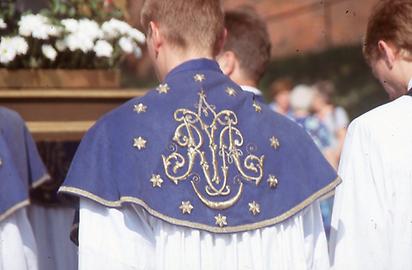
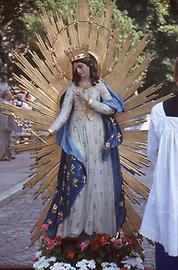
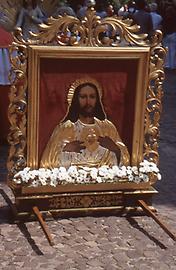
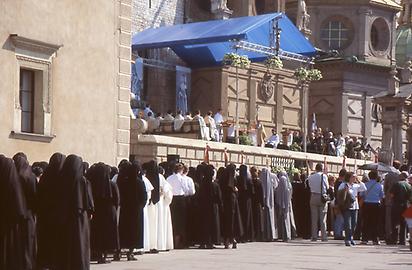


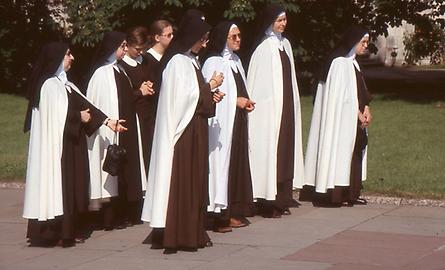


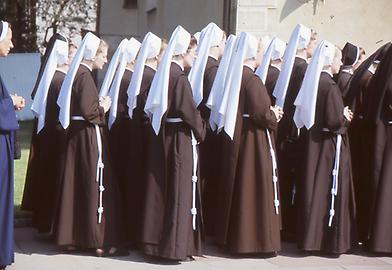
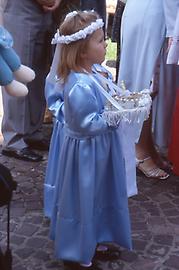
The procession starts with the brotherhoods and their banners and statues. There are beautiful women’s costumes. Young boys with portable speakers on the back spread the prayers of the priests who surround the sky with the Blessed Sacrament. They are followed by different male and female orders in habits which have been never seen before. The number of this convents is large. Especially, many novices can be seen with their white veils and also young men in their habit. Recruitment problems in Polish orders do not exist. Priests are even “exported”. In between, a guard of honour of the Polish mountain rangers with vulture fluff on their hats are defiling and, like in Austria, with the edelweiss on the lapels of their decorative uniform. Even the workers’ unions are represented with strong delegations. And then, there are the companies of Schuetzen in their historical costumes. They draw the attention to the Polish with their King Sobieski who where the decisive in liberating Vienna from the Turkish siege in 1683. Then the orders of knights follow in their flowing robes. Immediately in front of the sky with the Cardinal, carrying the monstrance, there are the rectors and deans of the Krakow universities with their insignia. With their glorious robes, dignity chains and the beadles with the sceptres of faculties they form the glorious end of the procession.

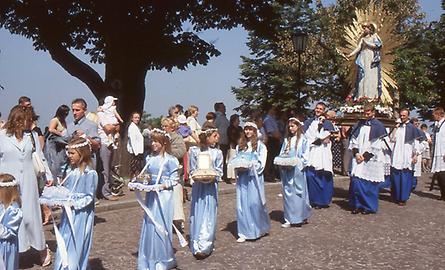
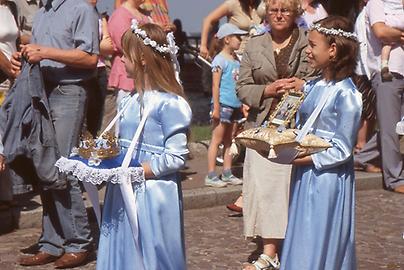
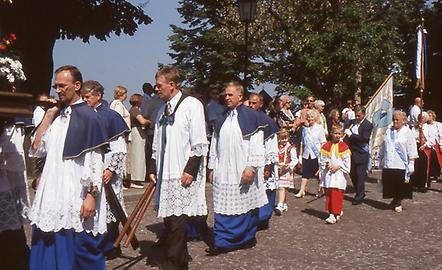

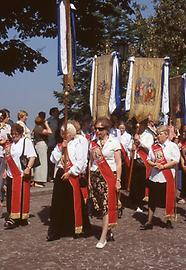
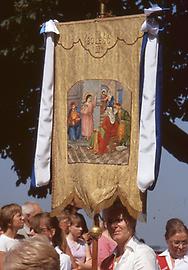


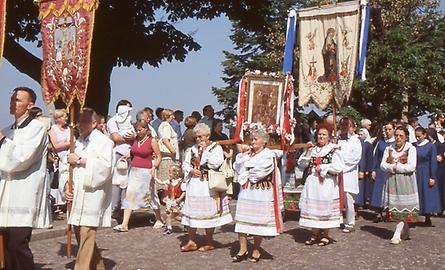

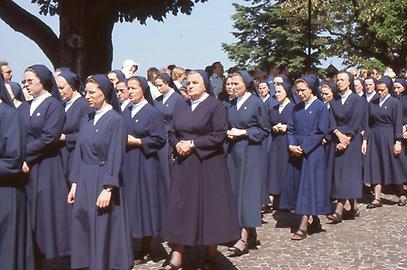
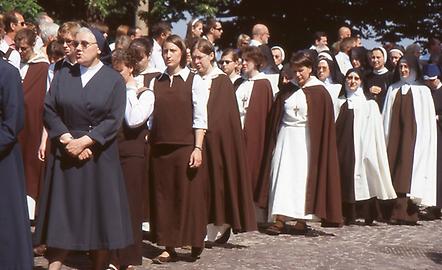
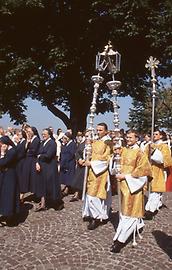


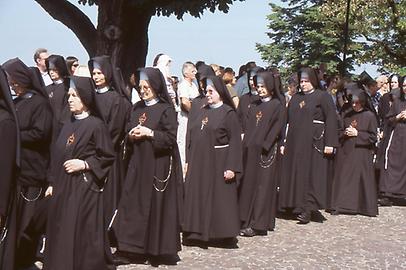
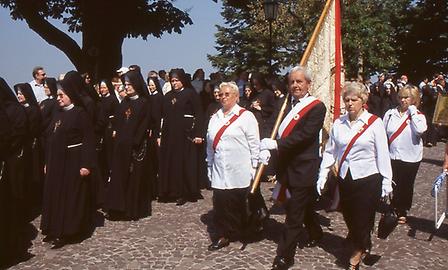
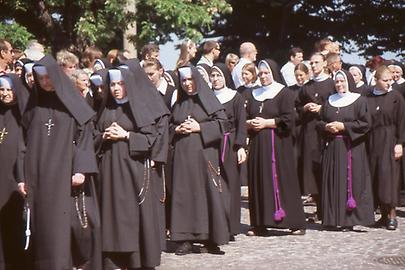
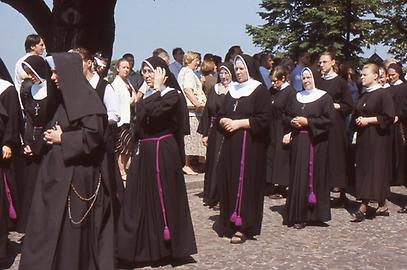
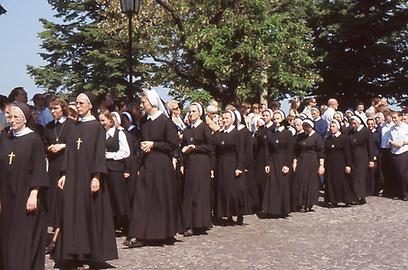

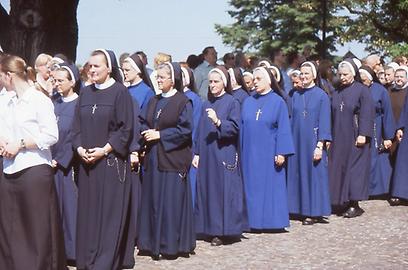




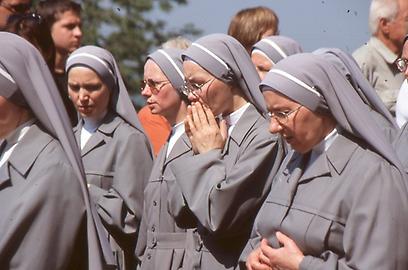

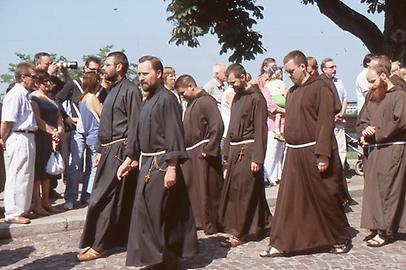
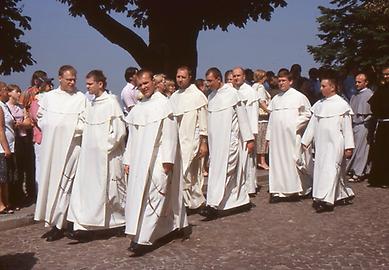





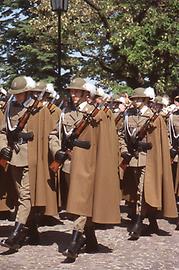

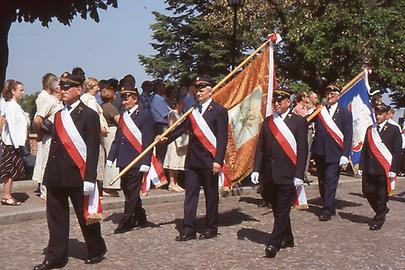

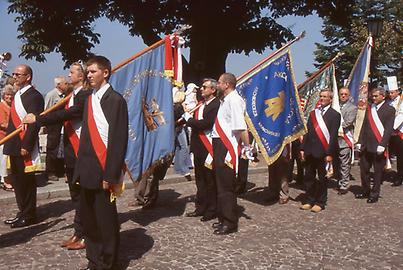
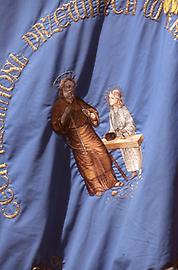



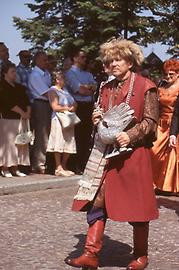

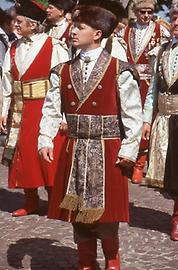

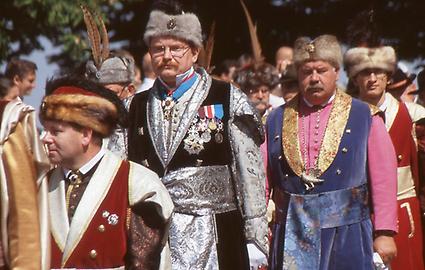
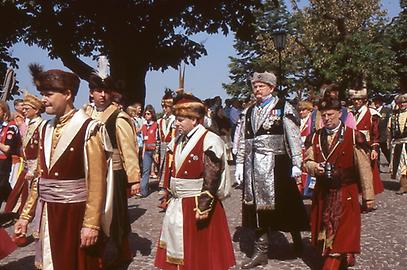


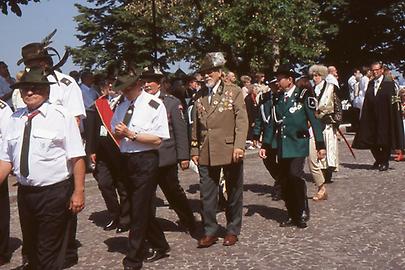


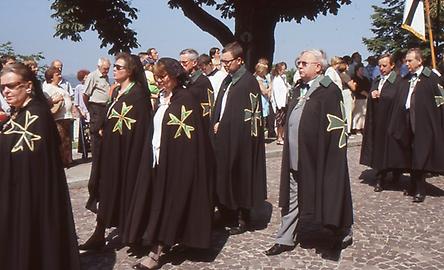
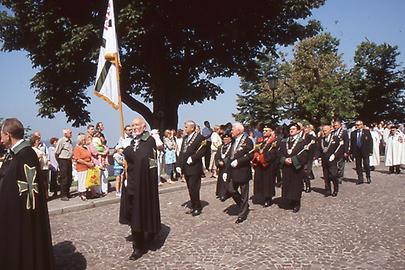

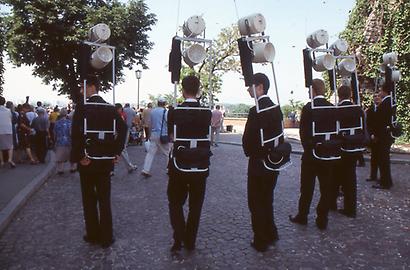
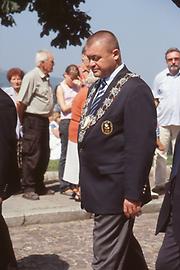

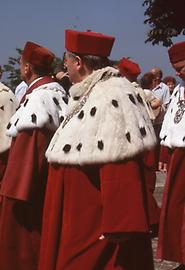


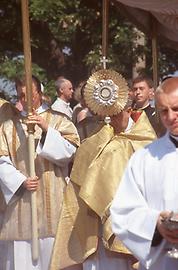
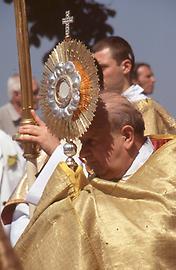
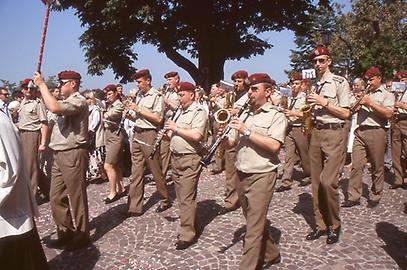
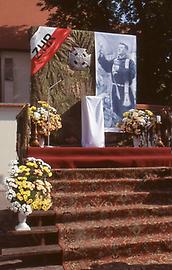
The afternoon of the Corpus Christi day belongs to the youth. Crowds of cheerful young people dressed either in medieval clothes or in nice regional costumes transfer you back to a time when in 1475 the Polish Duke’s daughter Jadwiga/Hedwig was married in Landshut with the son of the Bavarian Duke Georg the Rich. When seeing the flags and banners you notice that elite schools are maintaining this special kind of patriotism. Homeland and people, understanding of history and historical education have still a high priority, which contributes to the fact that the people are highly aware of their national identity.

